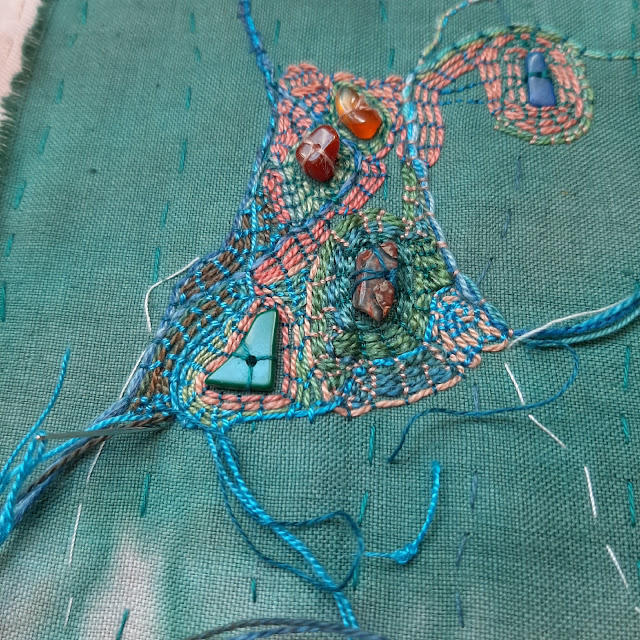 |
| Howard Colman Rowe |
Rhona would have been about thirteen when Howard died in 1914. In her books, as in Ganna's, the father figure is sometimes a man of gentle thoughtfulness, occasionally so much so that he is not entirely in the present moment. Rhona's novels also always have a small family of children, either at the heart of the story or firmly embedded in it. In one of them, Whatever the Heart Appoints, Candida Cornell has been waiting for her father to return from the war, during which he was badly injured, so delaying even further his return. In one passage, towards the end of the book, we see her inner musings and deep hope. That plaintive cry, "I have been without my father for years and years" wrung my heart with its poignancy
In Ganna's novels the father is never absent. often the family is entire and secure and there is deep and abiding love at its heart. Here, at the very beginning of Look on the Fields, Anny is travelling from London to Abbot's Ford, a loose rendition of Arklow where the girls grew up. Anny's father and mother have both died and she is coming to her Aunt and Uncle to live with them. She arrives at the station and her Uncle Jonathan (Howard) is so deep in his own thoughts that the travellers gradually clear until Anny is all alone with her suitcase, wondering at the waiting man further down the platform. Again, that gentle voice and ageless smile speaks so deeply of her love for the man who died when she was about 15.
My little Mum, although she never lost her father, felt all her life that she was a disappointment to him, that he hadn't really wanted a child at all, and that she was in the way. Here they are when she was around 8 or 9 I'd guess, looking very happy together at the beach hut in St Leonards, which was visited every summer.
As I am transcribing her diaries, I find that, for the most part, mentions of Daddy involve playing a game with him, getting him a meal, or being bought a gift by him for a birthday or Christmas, happy things. However, this little entry below, when she was 13, tells its own story of her need for his love and attention.
Daddy being cross was obviously a deep sadness for her.
And finally me - I too lost my "Daddy" young, he died the year I turned eight. I still, as a woman nearing the end of her 6th decade, find myself deeply moved by mentions of lost or dead fathers. It rings a chord in my heart. The film The Railway Children was released in 1970, two years after he died; our neighbours a family with four children, took me to see it. I have never forgotten my struggle to keep my tears inside as the father returns and Jenny Agutter, running through the clearing steam at the station, cries, her voice jubilant, "My Daddy, my Daddy!".
In my teens I took to writing poetry, mostly poor, but heartfelt. The words below were initially written aged 17 after I had again been moved to tears by something which touched on lost fathers. The words were revisited later as I turned 44, the age he was when he died.
For Dad
I often used to think of you Dad, when you'd gone,
And when I had to tell folk you were dead,
They'd start or look ashamed, apologise, and some
Would turn and laugh it off, one crass boy said
"Not dead I’ll bet, I ‘spect, he's just on holiday
He won't be long away"
I cried myself to sleep at night for many years,
And in my childhood’s sorrow called your name,
I reached my teens, but time still hadn't dried my tears,
I stood and cried for you again that day.
My loss still caught my heart, its tender edges frayed
You were so far away
And now I’ve grown beyond the days that life gave you
Can see your loss, these years of mine you missed.
My darling girl, your unknown grandchild, sweet and true,
You never met her, never felt her kiss.
You're gone, but still it’s hard to keep those tears at bay,
You’ve been so long away
 |
| Daddy with his little "Dumpy" |









